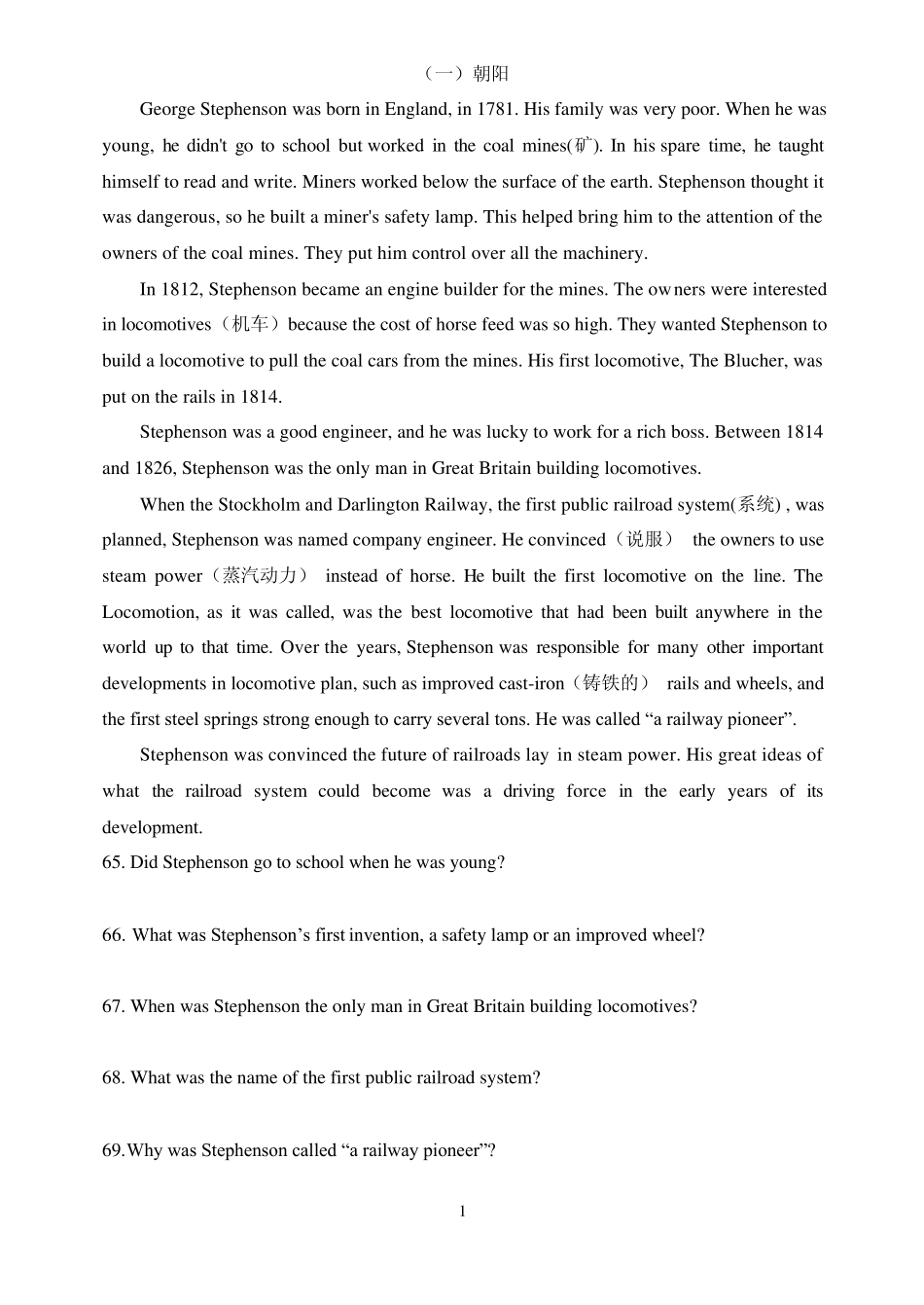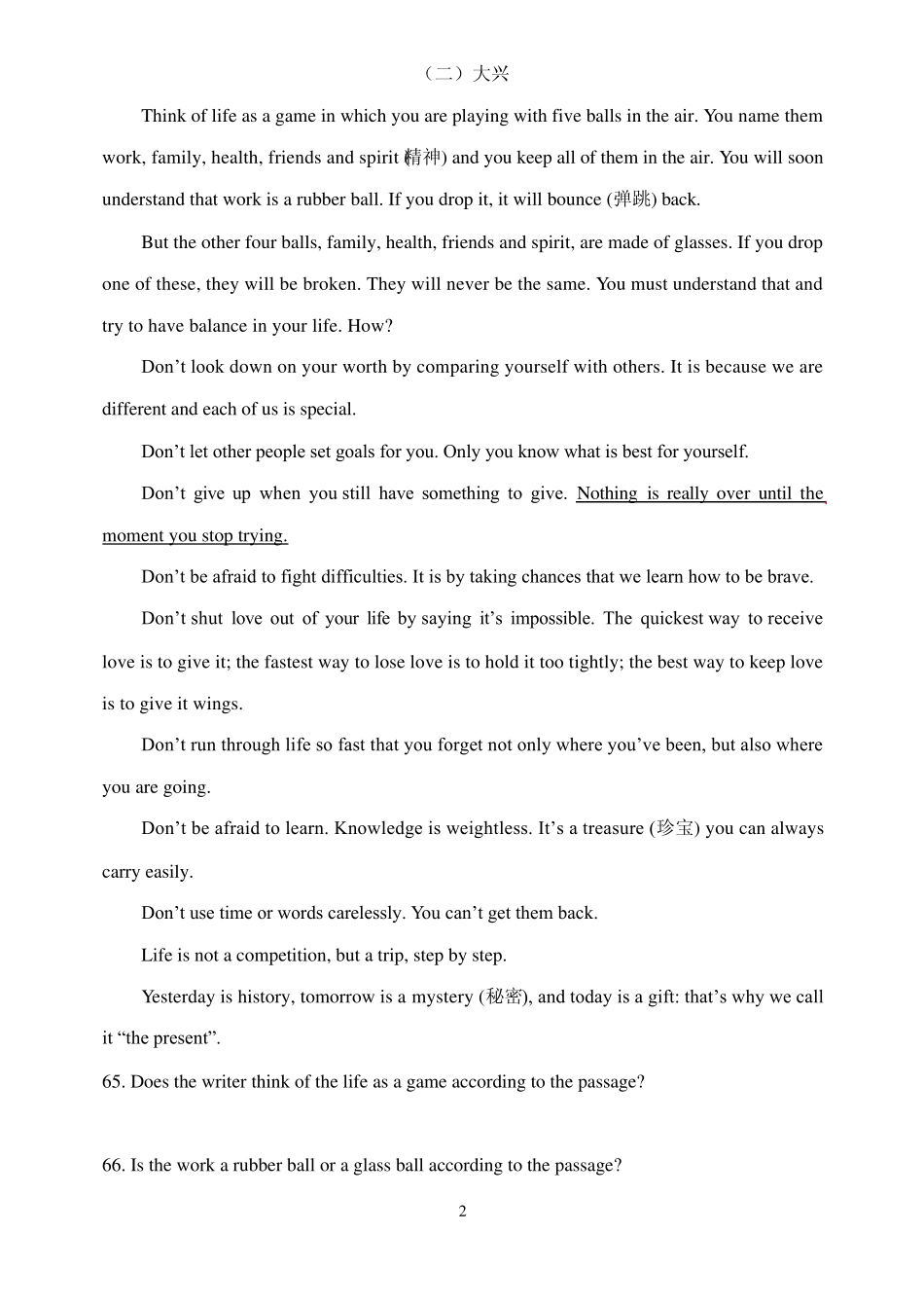1 (一)朝阳 George Stephenson was born in England, in 1781. His family was very poor. When he was young, he didn't go to school but worked in the coal mines(矿). In his spare time, he taught himself to read and write. Miners worked below the surface of the earth. Stephenson thought it was dangerous, so he built a miner's safety lamp. This helped bring him to the attention of the owners of the coal mines. They put him control over all the machinery. In 1812, Stephenson became an engine builder for the mines. The owners were interested in locomotives(机车)because the cost of horse feed was so high. They wanted Stephenson to build a locomotive to pull the coal cars from the mines. His first locomotive, The Blucher, was put on the rails in 1814. Stephenson was a good engineer, and he was lucky to work for a rich boss. Between 1814 and 1826, Stephenson was the only man in Great Britain building locomotives. When the Stockholm and Darlington Railway, the first public railroad system(系统) , was planned, Stephenson was named company engineer. He convinced(说服) the owners to use steam power(蒸汽动力) instead of horse. He built the first locomotive on the line. The Locomotion, as it was called, was the best locomotive that had been built anywhere in the world up to that time. Over the years, Stephenson was responsible for many other important developments in locomotive plan, such as improved cast-iron(铸铁的) rails and wheels, and the first steel springs strong enough to carry several tons. He was called ―a railway pioneer‖. Stephenson was convinced the future of railroads lay in steam power. His great ideas of what the railroad system could become was a driving force in the ea...


